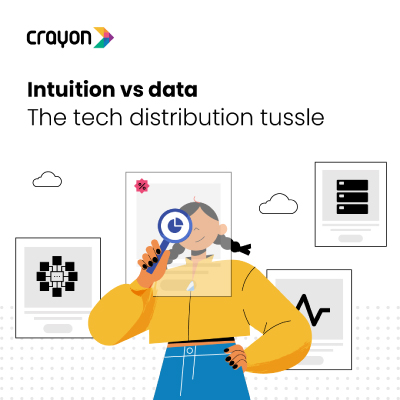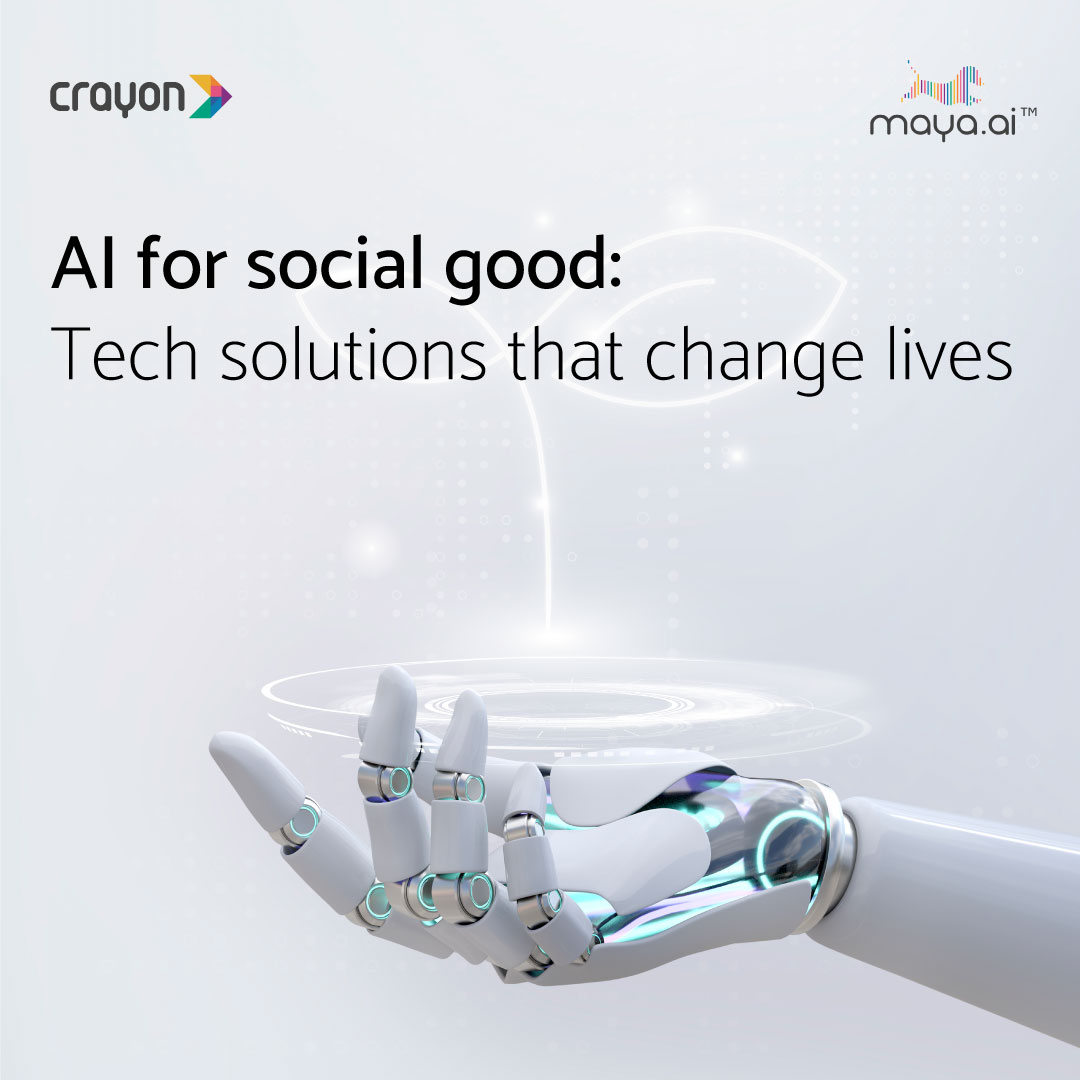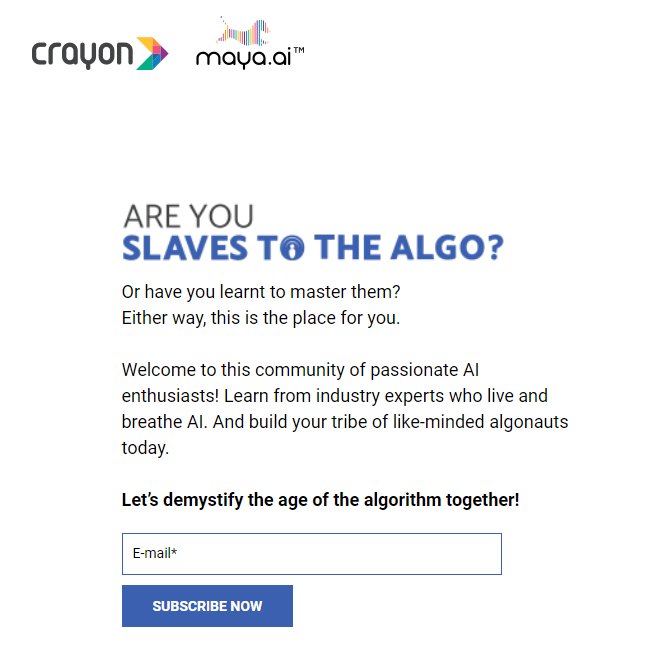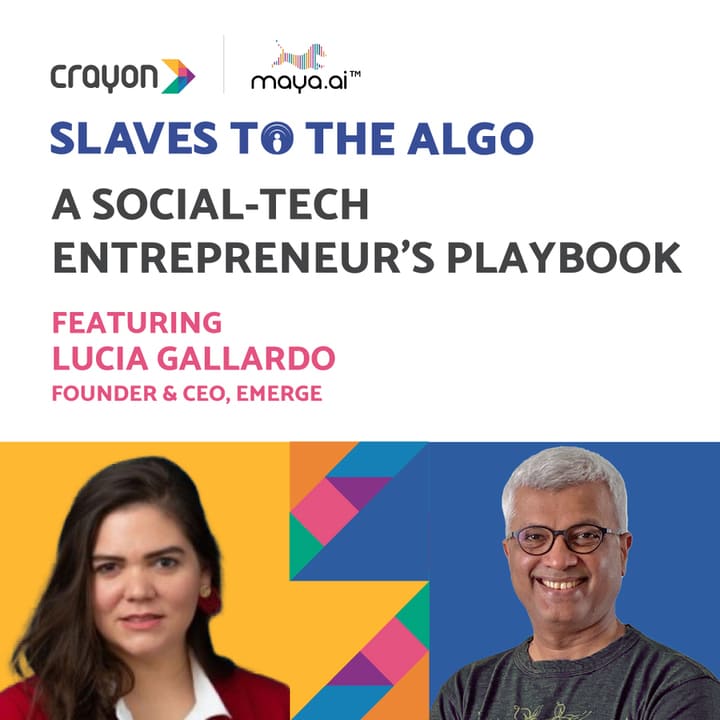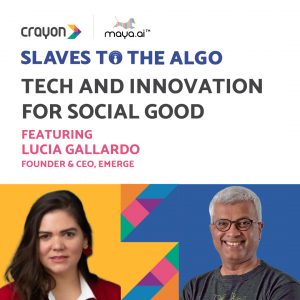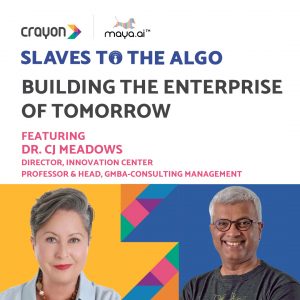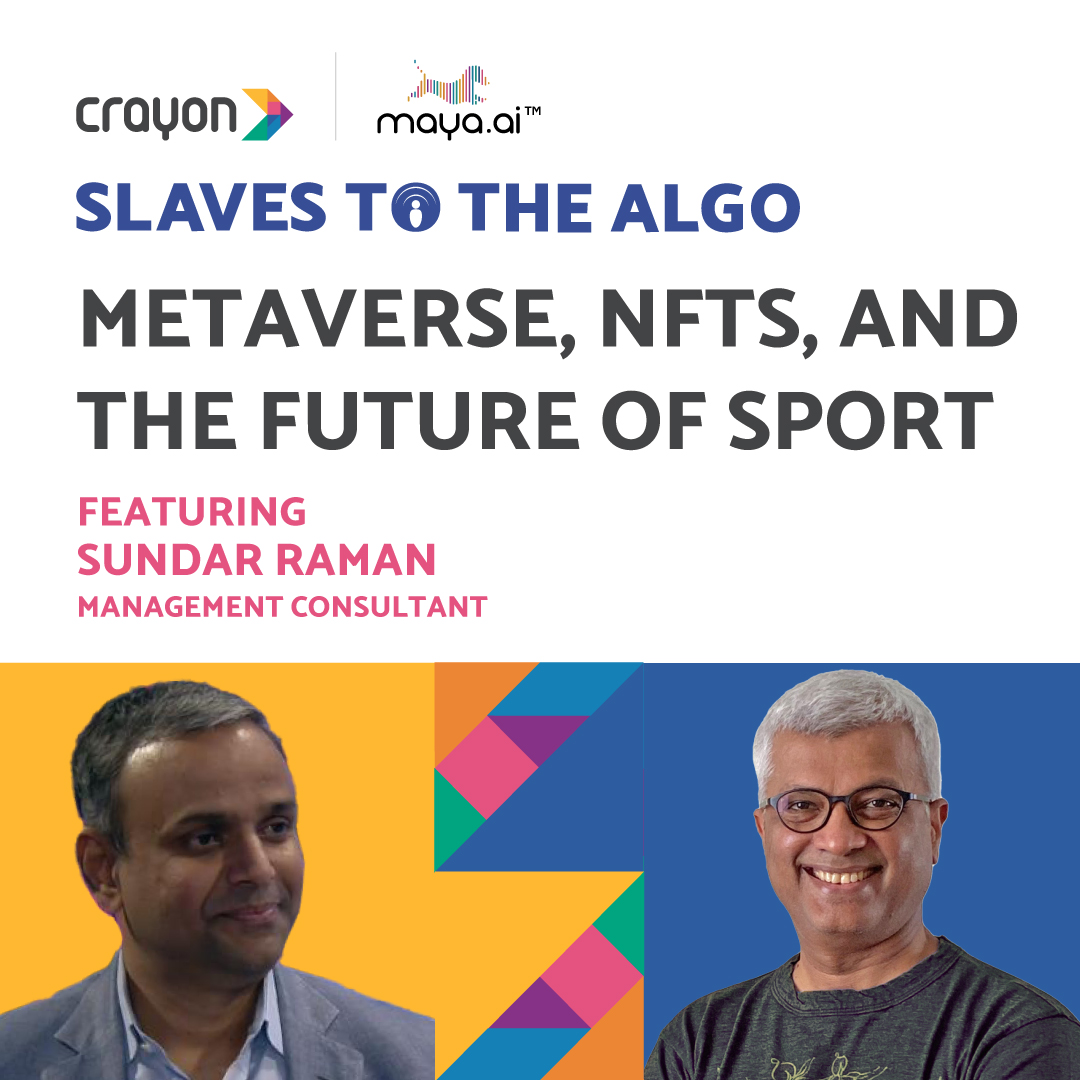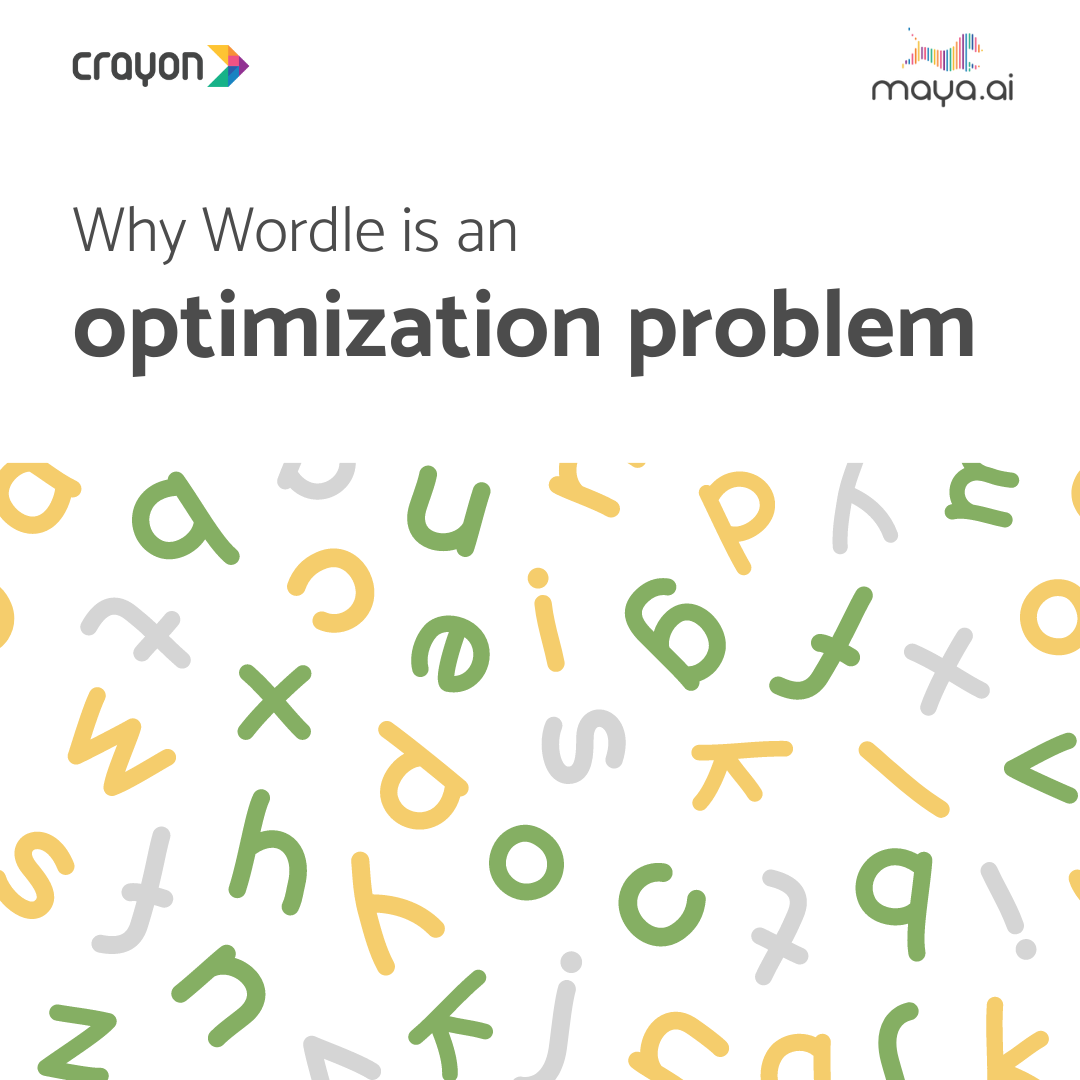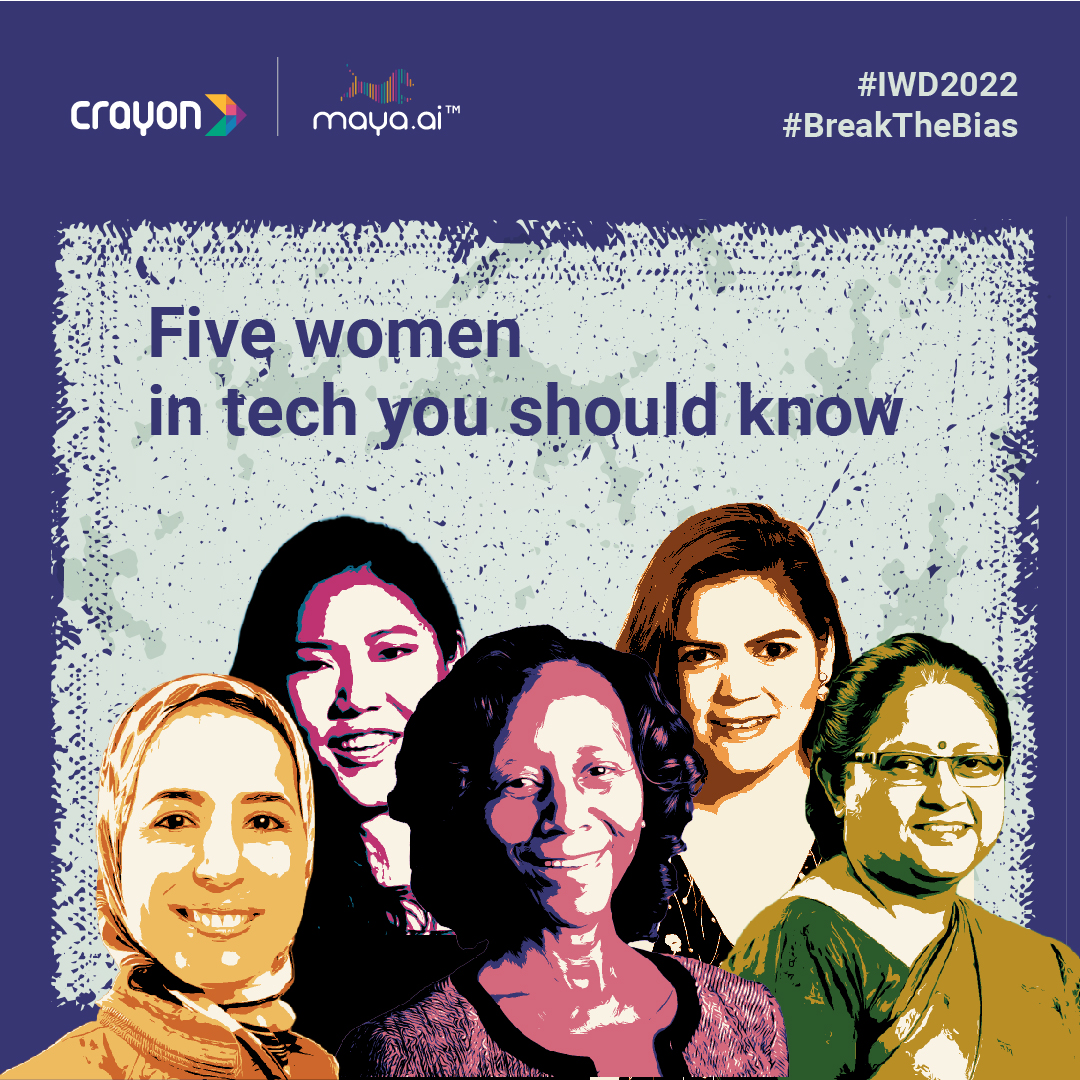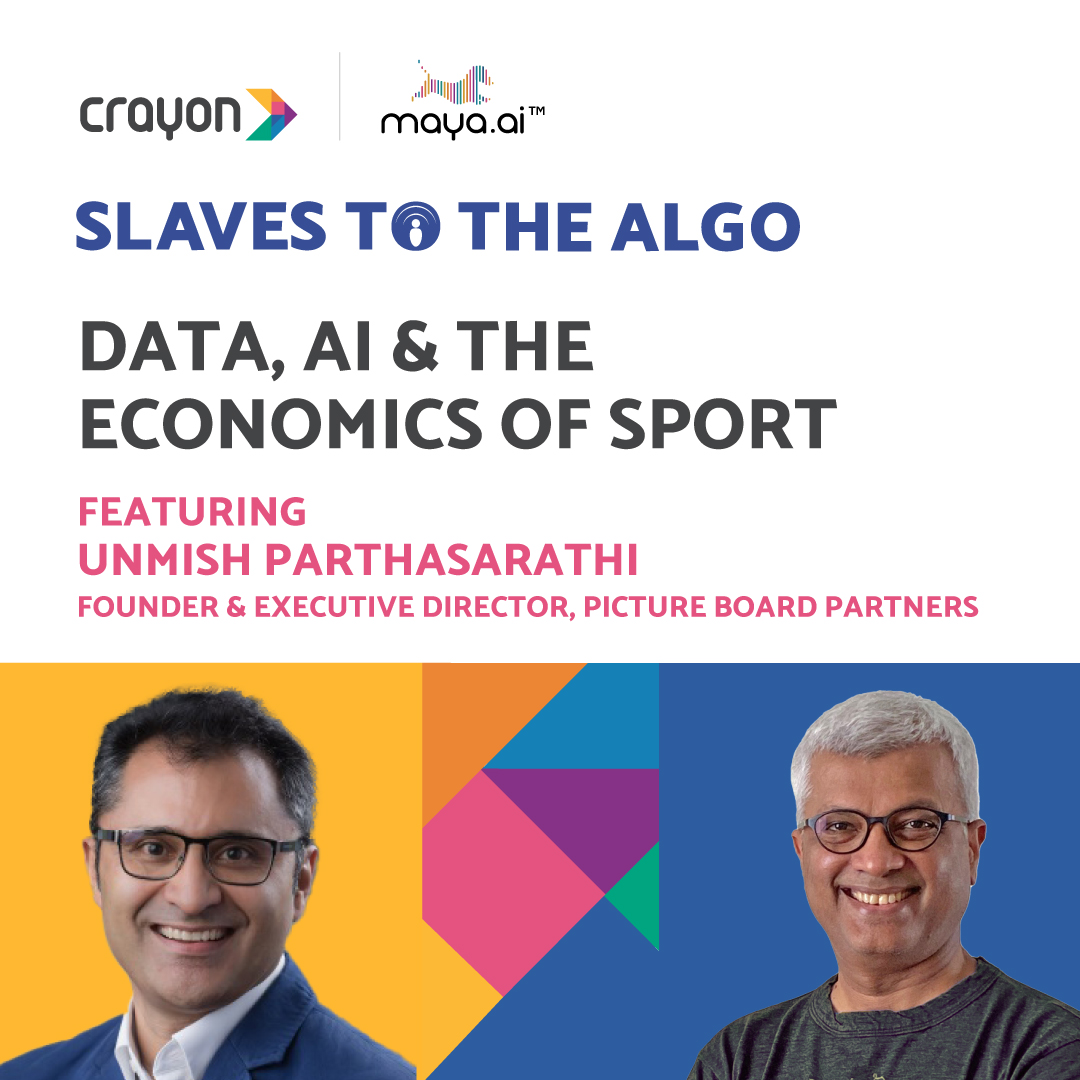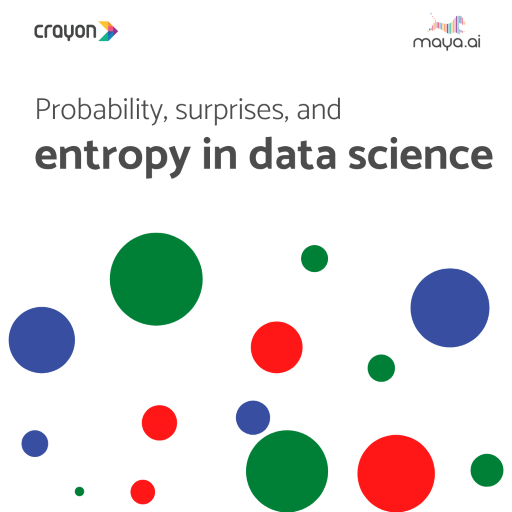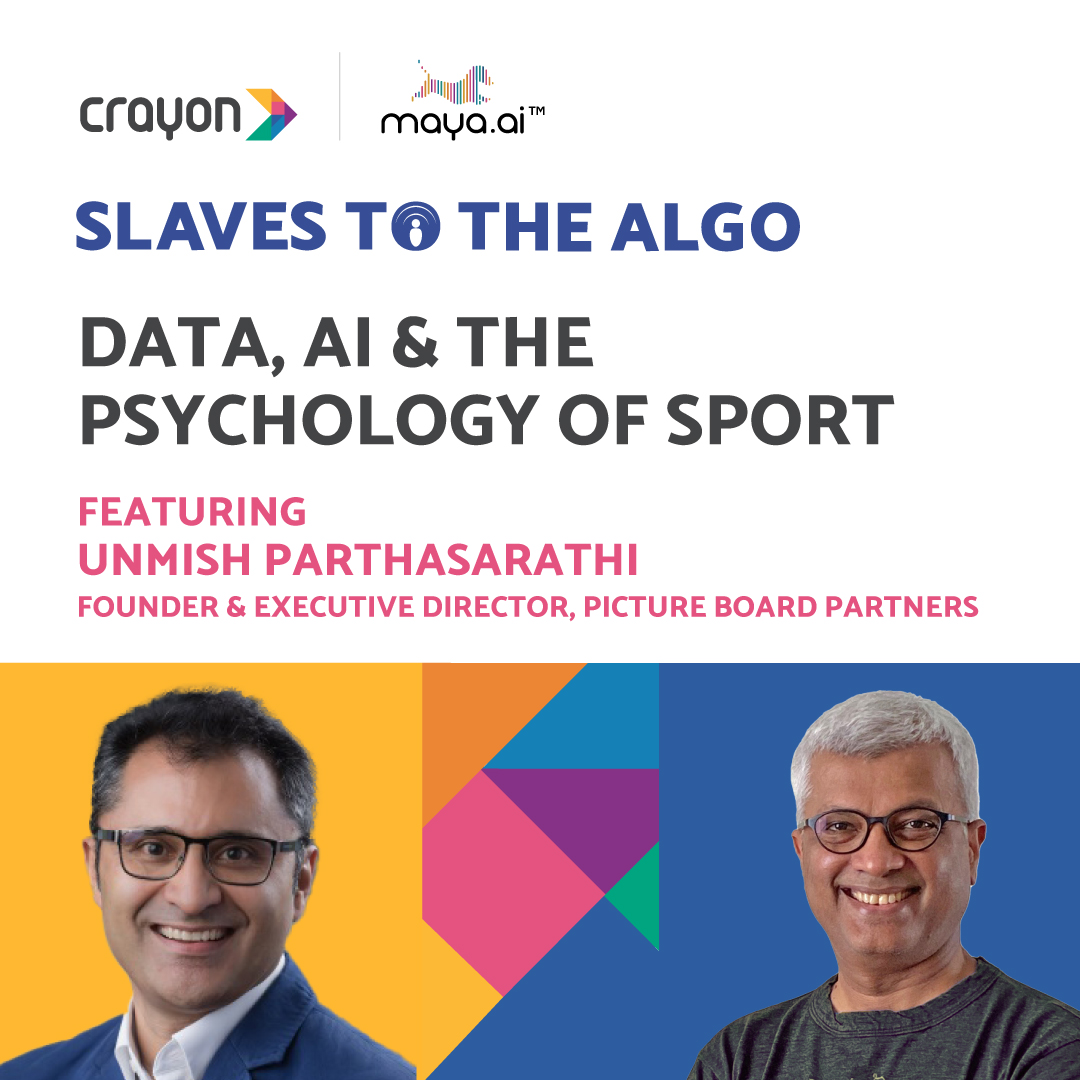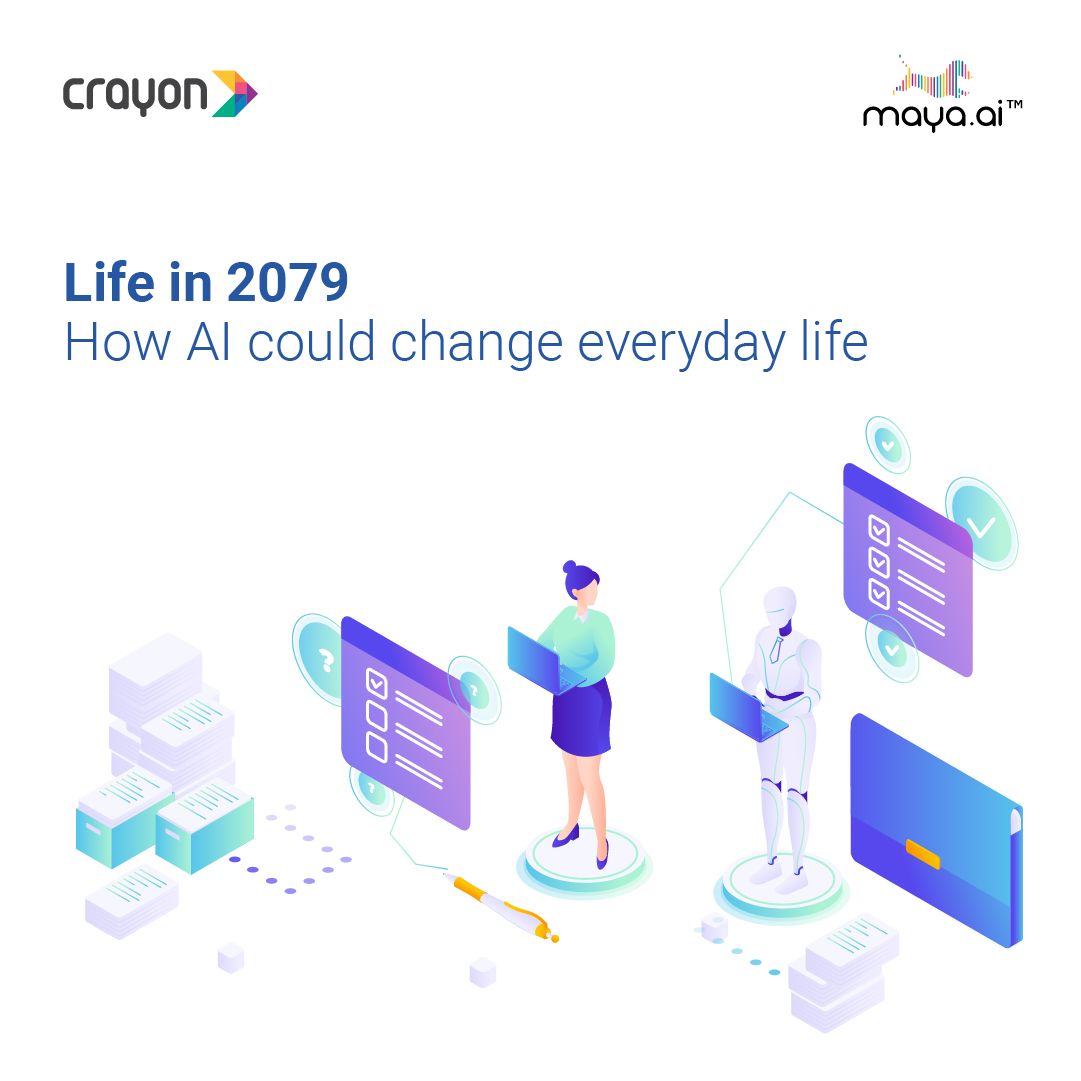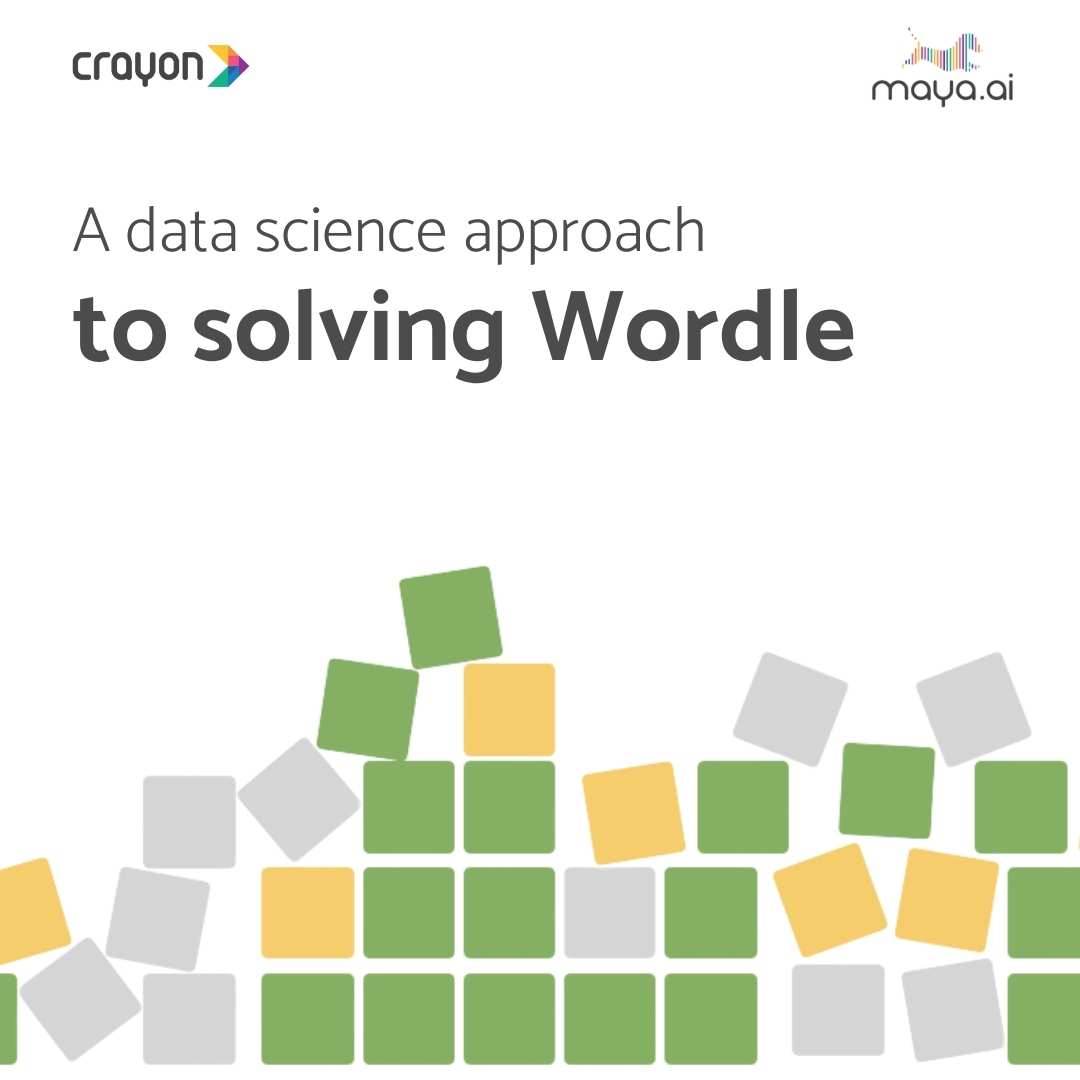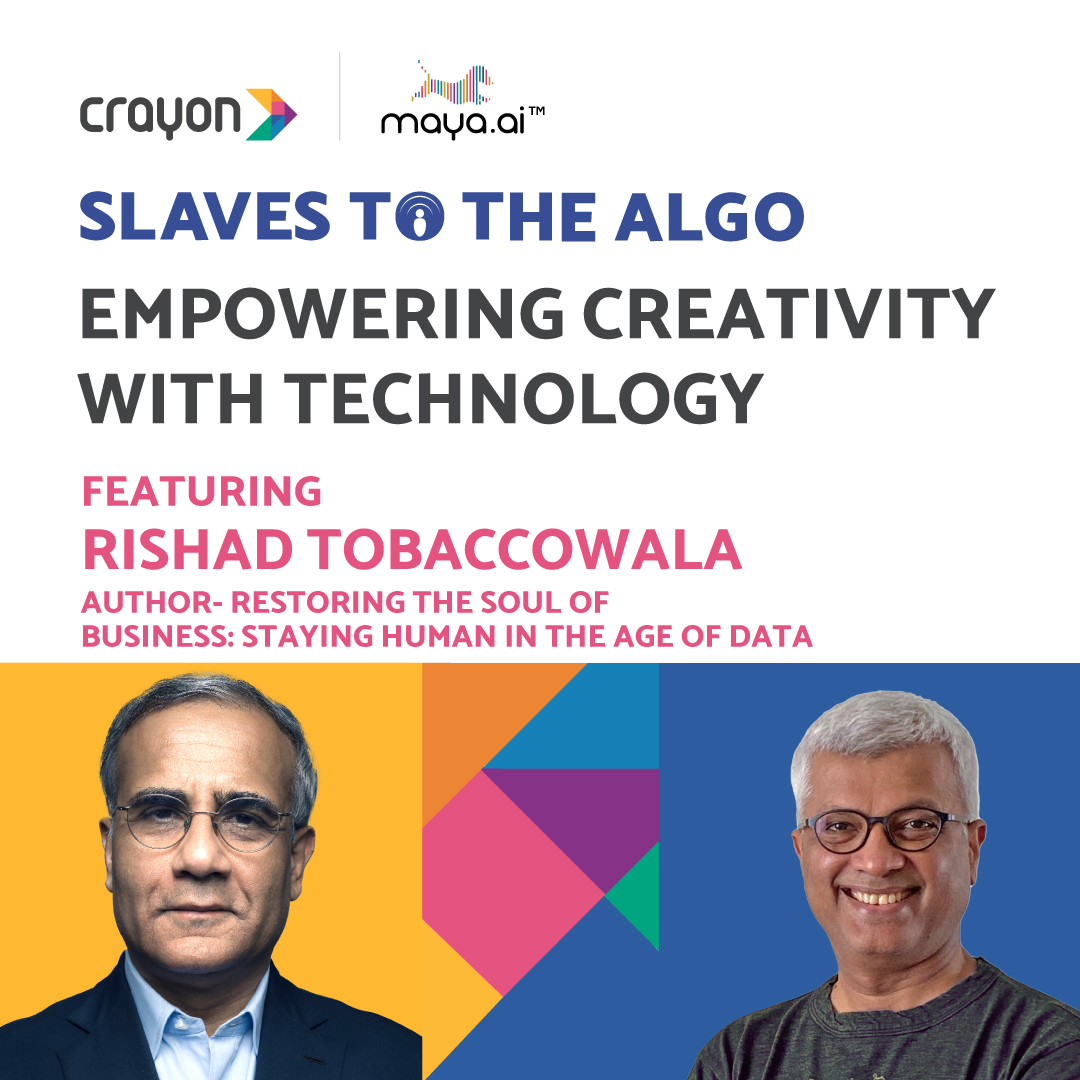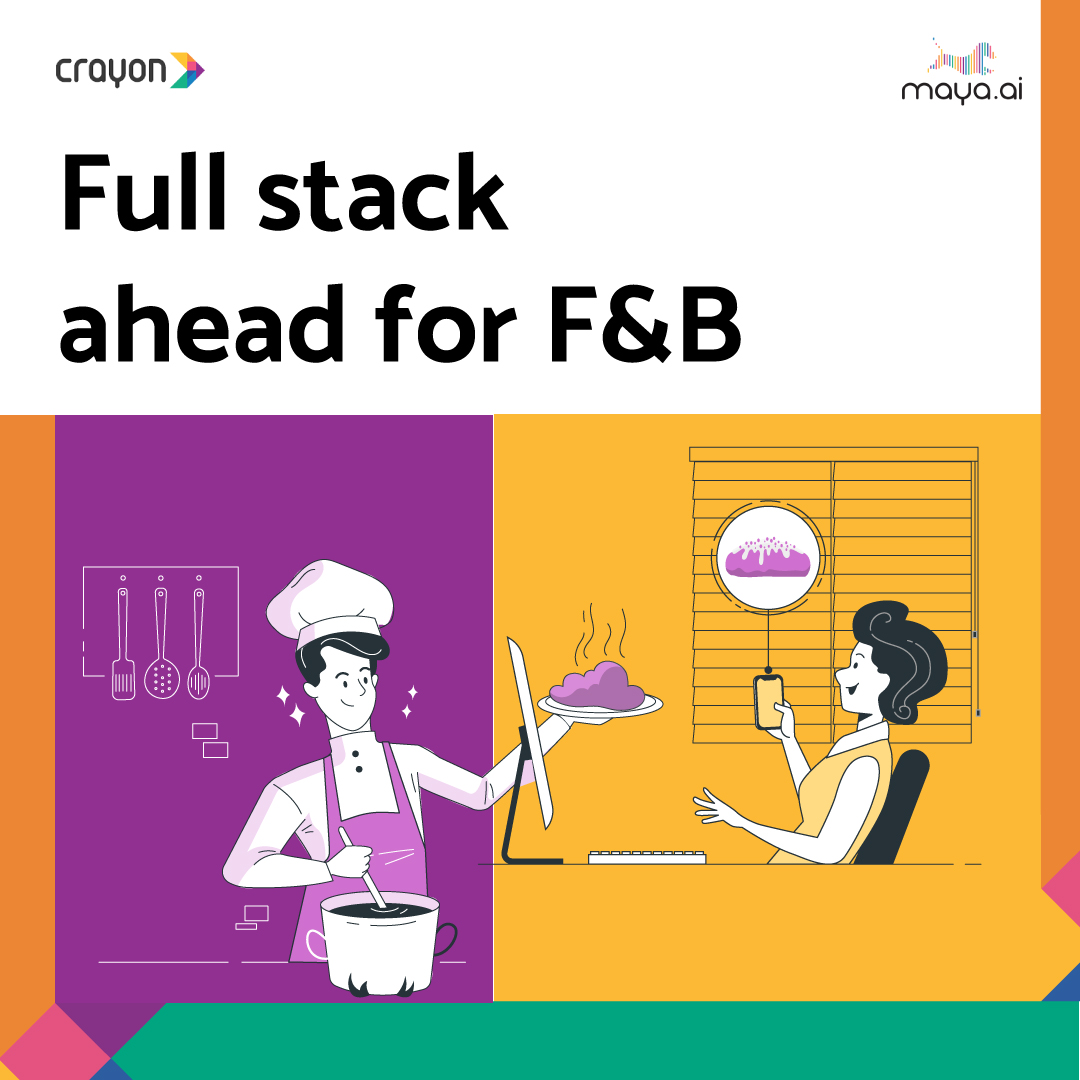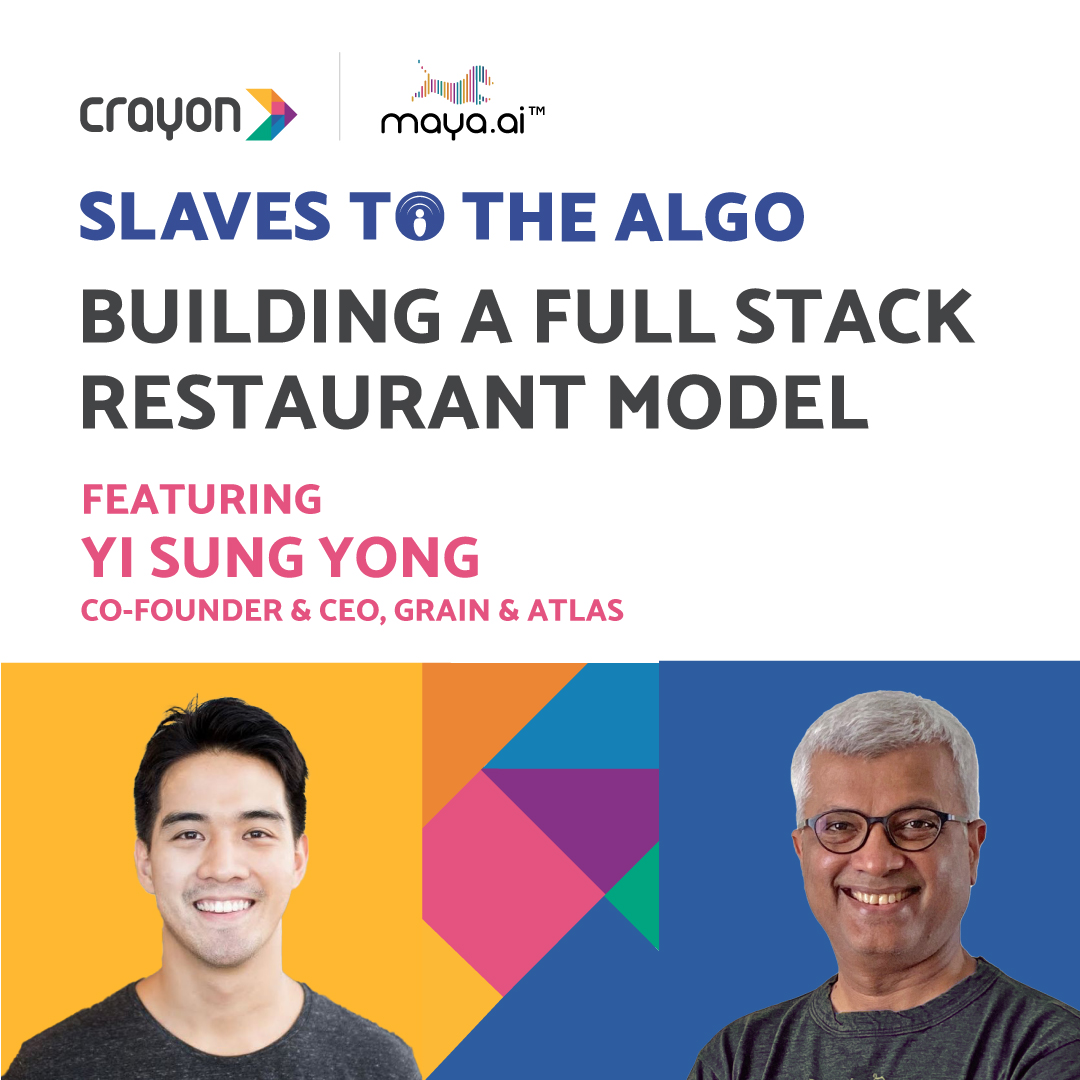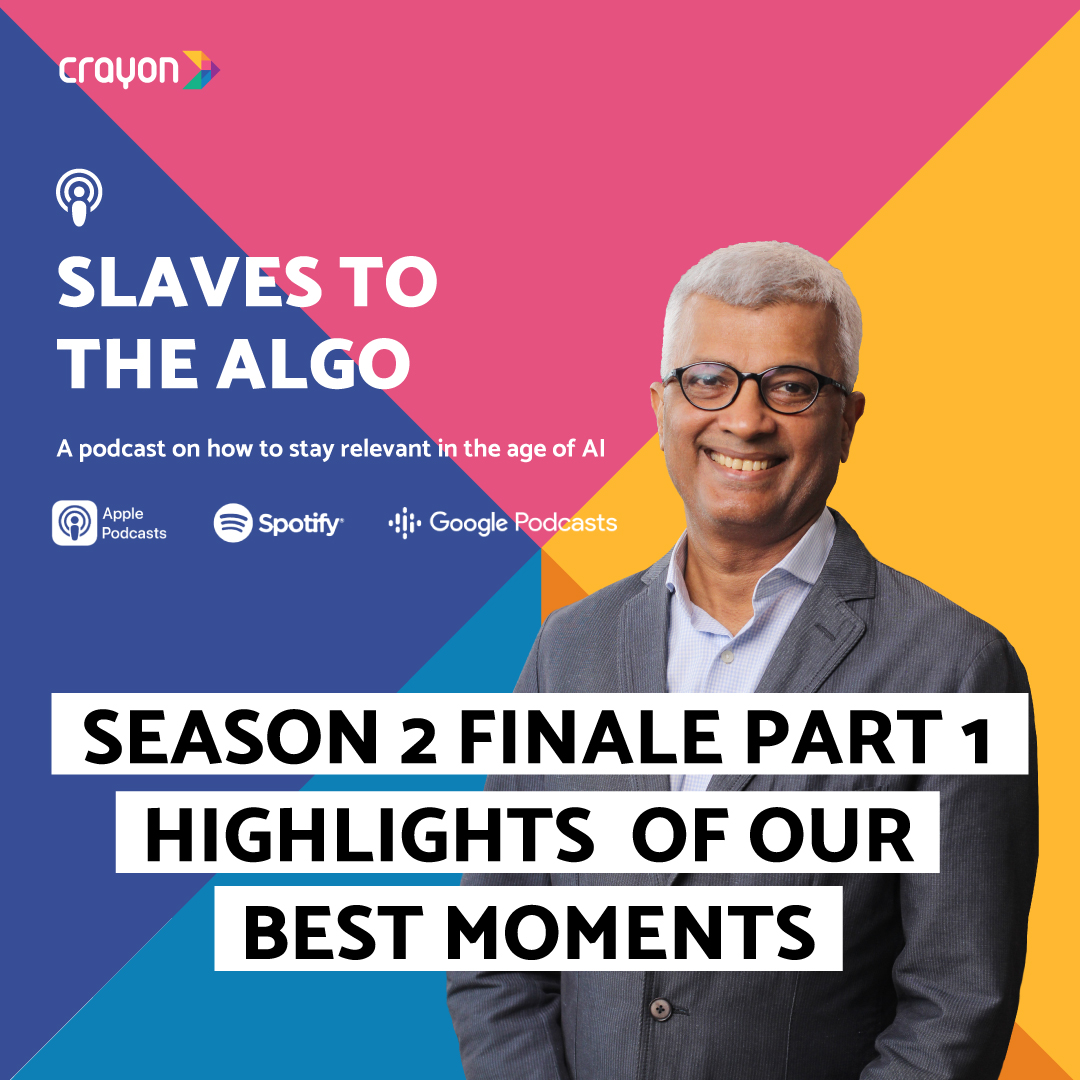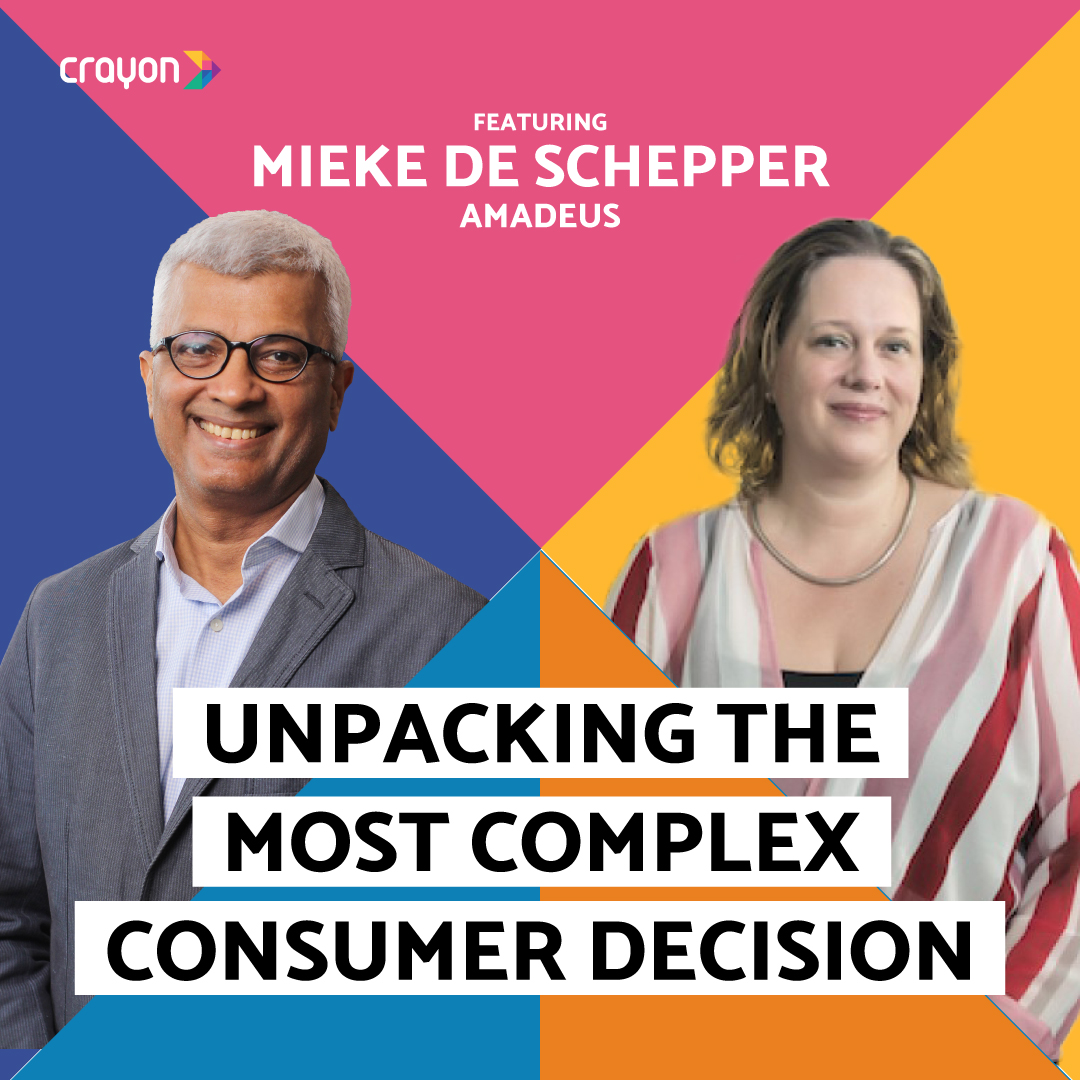The way humans communicate is in bite sized pieces. So-Young Kang believes that we’ve been practicing micro learning for 1000s of years now.
Our most recent guest on Slaves to the Algo says, “It’s the neuroscience of learning. There’s the behavior design component of it. But there are decades of research around how humans learn and maximize our potential. And it’s not through long form one way communication.”
So-Young is a pioneer and serial entrepreneur constantly looking at new ways of solving big challenges. Her latest challenge is focused on how to maximize human potential and reach billions through founding Gnowbe, which is disrupting the future of talent and work through a mobile-first, microlearning and employee experience solution. This was spun-out from her first company, Awaken Group, a multi-disciplinary Transformation Design (TD) firm that integrates strategy, leadership and innovation to catalyze change. With the impact of her work, she was nominated to be a Young Global Leader by the World Economic Forum in 2014. She believes in giving back having founded The Young Professionals’ Group (YPG) in 2000, a nonprofit dedicated to helping students achieve their professional dreams. She sits on the boards of LNKM and GeniusU. So-Young is a Korean American based out of both the US and Singapore.
Dive into an interesting episode of humanizing tech in the age of AI with Suresh Shankar and So-Young Kang. Check out the full conversation below
About Slaves to the Algo
Whether we know it or not, like it or not, our lives have been taken over by algorithms. Join two-time entrepreneur and AI evangelist Suresh Shankar, as he talks to leading experts in various fields to understand how they are using or being used by algorithms in their personal and professional lives. Each episode highlights how businesses can leverage the power of data in their strategy to stay relevant in this new age of AI. Slaves to the Algo is brought to you by Crayon Data, a Singapore-based AI and big-data startup.
Suresh Shankar is the founder and CEO of Crayon Data, a leading AI and big data start-up based in Singapore. Crayon Data’s flagship platform, maya.ai, is the AI platform powering the age of relevance.
How to listen to our podcast
Full transcript of the episode below:
Suresh Shankar
Hello viewers and listeners welcome back to another episode of slaves to the algo. I’m Suresh Shankar founder and CEO of crayon data and AI, big data company podcaster and host of slaves to the algo. Slaves to the algo is my attempt to demystify the age of data and the algorithm sharing my learnings and those of other readings professionals to understand how they’re using or being used by data and algorithms in both their personal and their professional lives. And in Slaves to the algo we don’t attempt to say that the future is either dystopian or utopian, the data is good or bad, it merely seeks to bring alive the use of data and algorithms more into our conscious thinking selves. At crayon, we are particularly inspired by the life stories and professional achievements of women who chose to break the bias. The tech industry has been notoriously challenged when it comes to women representation. And in 2020, a study found that women make up only 28.8% of the tech workforce, it’s been increasing steadily. But this space is going to take a long time before women hold up half of the tech world like they do in the real world. So we do need role models. And in recognition of that, for the last few episodes, we’ve been featuring a series of women leaders in technology and data, people who are reinventing the technology landscape as we speak. And today, I’m particularly thrilled to welcome transformation designer on mobile tech entrepreneur and expert in education. Global speaker, So young Kang on to the show. Welcome So young.
So-Young Kang
Thank you so much, Suresh, it’s such a joy to be here. I love what you guys are doing data is so important.
Suresh Shankar
Thank you for that. A short introduction to So young. So Young is a pioneer a serial entrepreneur, she is constantly trying to reinvent herself and the world. Her latest challenge is focused on how to maximize human potential and reach billions. She is the founder of Gnowbe, which is disrupting the future of talent and work through a mobile first micro learning environment. And we’ll talk a little bit about that later. This is spun out Gnowbe is a spin off from our first company, the Awaken group, it’s a transformation design firm. But So-Young has done so much more. She was nominated to be a young global leader by the World Economic Forum, she’s founded the young professionals group, a nonprofit dedicated to helping students achieve their professional, she sits on multiple boards. And very interestingly, and we’ll talk about that also a little bit later in the show, a Korean American who’s like, you know, lives in two countries and works or two countries. So it’s really a delight to have, you know, a multifaceted person on the show. And so in let me jump straight into the first thing I like to ask my guests, which is a slightly more personal question. Most of us actually use a lot of data and algorithms in our life, not just people who are, you know, technologically proficient? And one of the things I say is, can we all share some examples of an algo, or piece of data that we’ve kind of come across, it’s impacted our personal lives professionally or personally. And I’m not talking about going beyond the Netflix and the Amazon and all that something that he said, wow, that’s cool. That really helped me or that’s terrible. I mean, how do they get to know that about me any any examples in your life?
So-Young Kang
I mean, I think data is such a critical part of our day to day, right in terms of even how we engage with content, and how we shape our perspectives and views. Something I’ve been really passionate about lately, is really the use of data to provide personalization, and the pros and cons of that. So if you just take social media and your perspectives on major issues, obviously, the algorithms are being tuned to my preferences and what I click on, and then all of a sudden, I’m getting a whole newsfeed based on those preferences, obviously, that shapes my perspective, and that either reinforces or challenges. And so in some ways, understanding the algorithms is I think, is critical to then forming kind of a narrative of what, how biased do I want to be or biases do I want to have? So you know, so I’ve been messing up the algorithms by changing and clicking on all kinds of strange things to get a much more diverse perspective in my news feeds. And so, you know, these are really small examples, but they’re really, really major things that are shaping the way we think and perceive the world.
Suresh Shankar
And yet, you know, it’s it’s fascinating that you say that you’re trying to influence the algorithm by going and clicking on crazy things, but for the average person, the algorithm is actually shaping the way they think because they’re doing it unconsciously. And I think There’s one of the biases that we talk about in the show, which is, how much are they messing with our lives? Or how much like you are you messing with the algorithm. But you know, I think I really want to come to your life story, because such a fascinating thing so young, I mean, you know, you were actually in strategy consulting and transformational work. And then you decided to create a difference in the learning space using technology. So what made you make that switch into into both learning and into another technologically enabled way of driving learning?
So Young Kang
Sure, it’s a great question. I mean, you know, my background, right. Because we’ve always, we spent a lot of time together. You know, I think when you’re in consulting, you know, an advisory, whether it’s McKinsey or whether it’s at awaken, I think the impact is deep, you know, you spent a lot of time and, you know, with your, with people and with your clients going really deep and solving their problems. And there’s, there’s a joy, you know, and a really deep purpose and meaning and doing that. But it’s really difficult to scale, right? It’s difficult to sail to scale, deep kind of consulting, and advisory work. And so the whole idea of mobile, and I share this story is I’m not particularly, you know, in love with mobile phones, or anything, but there are a latest count five to 6 billion if I’m not wrong smartphones in the world. So there is going to be a technology device that is going to help us scale and improve human potential and reach, you know, so many people today. It’s a mobile phone. And so that was the reason why, you know, we leveraged that particular modality, if you will, as a vehicle for delivering impact. Now, in terms of learning, and improvement, and just maximization of human potential. It was a little bit shocking that there are not a lot of tools designed for true learning experience in community, which is how we learn. Most of the platforms are really good at content delivery of learning content. True, and those are very different things. So, you know, as an entrepreneur, we like to solve problems, I was really shocked that this problem was not solved, that there were not better tools for learning. And so that was why we created Gnowbe, which is a Creator tool, for trainers, and for content creators to design better learning experiences.
Suresh Shankar
And you’ve done it in a particularly interesting way. Right? I mean, you know, you tried to say, Hey, listen, how do I take this whole face to face interaction, which is how training was always done. And you made it your design the process in a way that it’s kind of, it’s almost like it’s face to face? Could you walk us through that?
So Young Kang
Sure. So I think learning in the way that humans learn is a combination of things. It’s really quite simple, you know, someone catalyzes and gives us a knowledge catalyst, that’s a piece of content, an idea, that could be a video or an article, etc. And that’s the beginning of learning. Once we have that, we then need to dialogue and discuss and think about it. And then we apply it obviously, if we apply that, that becomes part of our knowledge base. And so you can apply those same principles face to face, or in an asynchronous, you know, digital environment or in a blended environment. So we just took the same philosophies. I’m also an educator, so I used to teach many, many years ago, and in some weird ways, I’ve been teaching, you know, my whole life actually. And so, even though I wasn’t never, there wasn’t a formal teacher, you know, I’ve been teaching and training for my whole life. And so you take those same principles, and the technology was designed to mimic the human experience. So because of that, the majority use case of Gnowbe by trainers, educators leaders, is for blended experiences they use it to as a digital companion, to their face to face experiences. And we also have people that who take that and then also do it in kind of a standalone, asynchronous environment for scale. So that the breadth and depth of how people are using it has been mind blowing to me. Because it’s not just about self directed online learning, there’s definitely that component as well. And the reason why we’re able to do it is we just take the human experience of what a facilitator let’s say, for me, you know what I would say at the beginning of a workshop, I just put that into Gnowbe, if I want to give a word of encouragement, I put the word of encouragement I read I predesign it I wanted to a personalization say hey, Suresh will done. Great job. Then I put that into Gnowbe, right? I personalize that I share a video, after the video, I say, what are your three takeaways from that video? I just embed that into the into Gnowbe. So Gnowbe was designed literally to take the things that I would do as a human facilitator, and I just put that in, whether it’s a Training Program, or whether it’s an onboarding program, whether it’s product training, no matter what the context is, it’s mimicking me the leader, or the the speaker or the content communicator. And then the technology is just supporting me in that journey.
Suresh Shankar
You know, you said it so much better than anything that I’ve ever heard say about when you said, it’s mimicking. And you’re putting all of that into Gnowbe. And it’s fascinating, because what I’m taking away from this is, we’re all actually walking, talking producers of video by just the way we live video, audio training experiences we’re trying to pass that knowledge on. And what you’re saying is, why don’t I just capture that and put it into something that’s asynchronous? I mean, it’s such a powerful, compelling thought. And you know, but there are two things that I think I always found fascinating about, you know, between one is he talked about mobile and the second talk about micro learning. And in one of the interviews, one of the fascinating things that I heard you say is that we’ve been doing micro learning for 1000s of years. But there’s a tendency in tech, of course, to believe that we created everything, but yeah, I just want you to delve into this what how, what is micro learning? And how is it something that that you’ve been kind of bringing to people through the mobile?
So-Young Kang
Yeah, interesting. So have you heard of top down communication? Or executive summaries? Twitter?
Suresh Shankar
momento, right. Twitter,
So-Young Kang
Cliff Notes. Okay. So these are things and for those of you who are older who don’t know, a cliff notes are right, back in high school. So we’ve been doing summarize, because the human brain can’t actually consume so much information. So we communicate in ways we summarize, we synthesize we bullet point, we do things to help with understanding and retention. Now, I would challenge everyone, even on watching your podcast Right? to time how long it takes you to make a point and how long it takes me to make a point.
Suresh Shankar
I would guess that you’re better than me. But in general, I would say a lot of people can go on for about 30 to 45 seconds without getting to the point
So-Young Kang
that No. So on average, right? It will be less about a minute or less than a minute. If it’s more than a minute, you know, we might feel that they’re dragging on. Unless they’re super compelling and amazing, right? But in general in general, right. So the way humans communicate, is in bite sized pieces.
Suresh Shankar
That’s interesting. And you’re saying the bite size piece is a minute at best at which point of time the human minds stops, to listen. Is that dropping is a minute dropping given the the world is coming in shorter and shorter attention spans, especially with a mobile
So-Young Kang
there are lots of research to talk about attention spans dropping. So there is research that says no attention spans are nine seconds in terms of focus. I don’t fully think that that should be applied to every context, because in a conversation, I don’t see human behavior. Now speaking in shorter sentences. So I don’t know if that observation is universally applicable. I do think an observation of human behavior is that we have always, in some ways, communicated in short, bite sized pieces.
Suresh Shankar
And one of the other fascinating things about micro learning is that they talk about the fact that, you know, you can only talk about one or two topics in each unit. And it’s, it’s one is the time to don’t talk about too many things. And my question is slightly different is micro learning. Does it help deep learning? Does it actually mitigate against deep learning? When you try to make everything into a bite size unit, then you know, you also not going into depth to the nuance of a job? What’s your experience on that?
So-Young Kang
It’s exactly the opposite. If you’re going to teach a very complex topic, if you don’t break it down into bite sized pieces, good luck. Any complicated and just take a complicated problem, for example, you know, so one of the things you know, that I learned at McKinsey is how do you take a really gnarly problem and you break it up into little bite sized pieces, you have to break down that problem into its small component pieces, otherwise, you can’t solve it. So the idea of taking a gnarly topic and then being able to understand it. If a good teacher, a good facilitator will do a great job of breaking it down into these bite sized pieces to help people understand that concept. It’s the way that humans actually process information and learn. You can take a complex topic and just put it into an eight hour day and talk at people and expect them to hire high retention that is actually not based on learning science, neuroscience behavior or design. It’s just not effective which is In some ways, a misunderstanding of how the human brain works. And you know, the things we’re talking about are related to the way that brains work the way it’s the neuroscience of learning. There’s the behavior design component of it. But there are, there’s decades of research around how humans learn and, and maximize our potential. And it’s, it’s not through long form. One way communication that is not considered best practice that’s actually efficient, that was designed for efficiency that was not designed for effectiveness.
Suresh Shankar
It’s very interesting that people on my podcast, we do a long form podcast, and we talked about it right, we spent about 25-35 minutes and try to go into some depth. And I’ve actually had people on my podcast talk about how even this is now, two or three different kinds of podcasts, he talked about the snack, the slightly more like, you know, literally like a 30 second bite. And then they talk about the long form. And one of the views is somebody who might have chose an expert in the way podcast is it’s also a form of micro learning, if you will. Sure. So you said it’s, it’s different strokes for different folks. And it’s very different for different types of topics. So and you’re a podcaster yourself. So how does micro learning work to the podcasts environment? I’d love to learn?
So-Young Kang
Well, I mean, that’s why I think I do micro learning is, in some ways, I don’t even talk that much about micro learning anymore. Because even in this podcast, it’s actually small bites, you are speaking for about 30 to 45 seconds, I’m speaking for 30 to 45 seconds, and we’re going back and forth. And we’re having a dialogue, which makes this much more interesting as a format. And we’re making different points. Now, if you string all that together into a 30 to 45 minute podcast. And the truth is people will take away if we’re lucky, three points. But most will probably remember one or two, if we’re lucky, right. And other people will say that was really entertaining and go on with their lives. I’m sure not with your podcast, but you know, in general. But but the whole idea is, but unless they apply that thing that that principle, that thing they learned after this podcast, and think about a really practical thing, they’re going to do it apply, they probably will forget about it.
Suresh Shankar
And how does something like no, we’re not just Gnowbe but I think your whole experience in that right, I had a guy called David Shrier on the show, he runs a knowledge company using AI, he was telling me how an edX or Coursera has a 3% percent completion rate. 97% of people join these online courses, they don’t even do that. Now, when you contrast that with the kind of thing that you’re trying to do at Gnowbe, what’s the difference? And how is this here to make people learn better learn more?
So Young Kang
Yeah. And it’s not just learning. So I think Gnowbe started off obviously very heavy in the learning space. You know, we’re really more in the engagement communication space now, right? Because the tool, the Creator tool is so easy that anyone can create any kind of content, which can be for engaging your teams, sales enablement, right. So learning is now just a component, right of the overall thing. And you know, arguably, when you onboard a company and onboard a new employee, they’re learning about the company, right? So even onboarding is a learning experience. So let’s broaden the definition. Right? So So if you kind of take that context of what people are doing, that the other platforms I mentioned, we’re not I’m not going to talk about other ones I just talked about our engagement, our engagement is about 70 to 80%, or 60 to 80%. pretty consistently. The reason for that is not because you know, we’re these geniuses, right? It’s because we just understand science and research. And so the science and research of how humans engage is through kind of multimodal, we’re interesting people, we get bored easily, right? So behavior, design, gamification, principles, and neuroscience of learning of how we create neural connections. We just applied that science to the technology. So you don’t have to know all of this nerdy stuff, you know, all you have to do is when you use Gnowbe software, you just like, Oh, it’s so easy. Click, click, click. So we’re democratizing the creation of these experiences so that you don’t have to under have a master’s in education or instructional design, you can just click click, click, and you’re like, oh, and create a much better experience without even knowing why. But the why is because of the science and research that underlies the technology
Suresh Shankar
And the way, I love the way you said we’re not geniuses, we just use science. And research is probably one of the foundations of being a genius, but just as a lighter number, just to get what, just a little bit deeper. In your experience. Nobody talked about a 62% engagement rate that that happens. Is it the length of the content? Are you seeing that between the quality of the content is the connection between the person making the content and the viewer? What’s the driving factor there? What’s the data showing?
So-Young Kang
The Creator, the creator, so you take any class you’ve ever taken in your life? Life. And you take the best professor, the best learning experience you’ve ever had. I it’s usually not to do with the content or the topic the person was speaking about. But the way they deliver that course that made you go, well, he’s an awesome, she’s an awesome professor.
Suresh Shankar
Having attended the founders coaching post, I can testify to that with you kn ow, your rising, I think it’s, that’s very interesting. If it is that then you know, how you know, and if the power of the course and the engagement depends upon the speaker, how would you delivery? Okay. And as something like this, how do you actually help people become or use data to help people become better at delivery? How can you tell people listen, you’re a content creator, do six things, and you know, you’ll be a better communicator,
So-Young Kang
ya know, and it’s exact, that’s exactly the science. And it would say, that’s what we’ve created at Gnowbe. The tools to allow the communicator or the content creator, to basically learn and to by trying the Tech because the tech is designed in such a way that you really have to be very intentional to design it in a very linear, like way, in a boring way, like, you know, because Curiosity will make you check different things and try different things. And Gnowbe was designed in a social experience. So you you are guided, if you will, to design something that will be a little bit more engaging a little bit more interesting, right. And so the whole authoring tool is kind of like Canva Canva is, you know, I don’t have to I’m not a graphic designer, right. But I can use Canva and create pretty good stuff. Is it going to be as amazing as my graphic design team? Absolutely not. But it’ll be pretty cool. You know, and I don’t have a master’s in design, right? Similarly in Gnowbe, you don’t have to be a master instructional designer, but anyone can use know these tools to create something that’s pretty darn good. And, and so that’s the whole idea is to take the to demystify to democratize that whole creation process. And in terms of data, that’s extremely important. This is where technology actually is much and data become even more powerful than face to face. So when I’m face to face, I’m facilitating, which I love to do, I’m really relying on my understanding of nonverbals. And I’m just kind of observing the group who’s engaged, who’s not engaged. And just, some people are really good, right? They just look at you. And they nod, but they’re totally not engaged, right? They’re thinking about, you know, what they’re having for dinner that night. Right. And so, right. So as a facilitator in person, I have no idea really, if someone is engaged, and I really also don’t know, if what I’m saying is going to have an impact. And, you know, I want to have impact, right, I want to have the things that I’m sharing have impacted the lives of the people, but I have no idea and I have no data. So this is where Gnowbe, the data, you know, to the whole point point of this podcast is so critical. Because with this data, I can now see, oh, Suresh actually answered questions four, five and six in this way, he skipped this whole part. I wonder why he skipped it? He paused here, you know, is it is the content not good. I can literally put in data fields that go Hey, what did you think about I was trying this new video, what did you think of it? One star rating or five, I can literally get real time feedback from participants based on their behavior, based on their actual direct engagement, or indirect engagement, to then figure out how to design and improve my delivery.
Suresh Shankar
And you give this kind of feedback based on the engagement to the content creator so that they can constantly improve the site, we don’t have to
So-Young Kang
give it, it’s all in the dashboard, they can access it themselves. And in fact, the founders coaching pause that we have done, we use Gnowbe. And at the end of every day, probably unbeknownst to the participants, Roger Pang, and I would sit and look at the dashboard and OB and look at all the feedback that everyone was giving in the dashboard. And then that we would basically tweak and refine our delivery the next day.
Suresh Shankar
That’s nice. So moving on to another topic, I think, you know, one of the things that has also been another facet of your own journey has been your involvement in saying, We’ve got to do more for, you know, for young people, for people who are in, you know, less privileged in the people who can afford to go to like, you know, the top schools, and one of the things that you’ve done in Africa is to design this content for the Yes4Youth app. 8000 youngsters, you know, they are all spending, you know, something like seven or eight hours on the app and liking the engagement rate is 80%. So could you tell us a little bit about what what you’re doing something like that and, and why that kind of a program is doing?
So-Young Kang
It’s actually more than 40,000 Now, since we did the video, it’s 40,000. And and we really can’t take credit for that. So that’s yes4Youth, the organization, Yes4Youth and the former CEO now Tez, she is super inspiring lady, and she was looking for a platform and a mobile app to help unemployed youth in South Africa, given that there’s very, very high unemployment rates. In fact, you know, the former president, you know, all involved with this initiative, because it’s a huge problem, right in South Africa. And so they were looking for kind of, not just kind of micro content. So it’s, that’s why I kind of don’t talk so much about micro learning only anymore, because it’s not just about the content being short. Just because you take a 60 minute video, and you break it up into 61 minute bites, it doesn’t make it more effective. Right, because, you know, it just doesn’t. So it’s the instructional design part of it. That’s married with micro learning, that becomes really important. And so anyway, so they took that and they basically created a whole works, workforce development and preparation of jobs for these unemployed youth. They designed the curriculum, they designed the program, and you know, nobody’s just the software that delivers that they couldn’t find a software that was delivering very interactive, impactful experiences. That’s why what would happen in the old days, prior to no BS, they would have these people train on just some micro learning on phones, and then it would just drop off, it would just drop off because engagement rates were low, and they were not able to apply what they learned. So they would get their jobs. And they would quit. One of the things that they found which really, honestly, to this day, like you know, if you know who knows the future, we’ll be right. But if this is one thing that I feel like so proud of that we did, they were lacking confidence. Okay, so if you think about this, Suresh, when you and I work, and we make a mistake. What do we do? We learned we’re like, okay, cool.
Suresh Shankar
What did I learn? We go and ask people what happened out here? Sure. We go back, think about it ourselves.
So-Young Kang
No problem, right? And we’re fine. Now your unemployed youth in South Africa, who may never have had a job, you make a mistake on the job. They were quitting. Because they felt that they were they lacked, they were not capable, that they were not able to do the job that they had failed. Interesting. So what they realized was that what was really needed was a mindset transformation and a shift and confidence building. So they embedded into their Gnowbe programs, confirmation and confidence building activities every single day, in addition to the skill, so it wasn’t just skills and knowledge. It was mindsets, it was confidence, it was like, tell us the three things you’re good at, you know, tell us why you’re awesome. You know, take a picture of yourself, you know, like, you know, sharing something you’re proud of, when you make a mistake, what happens, right, so they started to build in all of these things every day, these young people are going going, Yeah, I’m good. Yeah, I can do it. I make a mistake. It’s okay. You know, I can ask for help all these things that you and I take for granted. And as a result of that, they were able to place now 40,000 people in jobs and the retention rate at the job right now forget the app who cares about the app? Right. 40,000. getting jobs and staying in those jobs?
Suresh Shankar
That’s wonderful . And would you say that this is a fairly universal thing that you know, while this happened in South Africa, and you talked about the lady who really drove this, but would you say that this is probably common across cultures? Because I can, but as you’re talking about, actually, the problem is the same. A lot of young people are unemployed people without enough opportunity just don’t have won the skill to the confidence.
So-Young Kang
Yes, it’s, we hear this over and over again, when we we do a lot of frontline training for service reps. And one of the things that we were surprised by is, when we did a pre and post assessment on impact, the confidence would go up by over 50%. So when we do AB testing groups that use Gnowbe, and ones that didn’t used to be the ones that use nobody had 50% higher confidence to do their jobs better.
Suresh Shankar
That is significant impact on you know, that’s, that’s, that’s a really big jump, you know, that.
So-Young Kang
Yeah. And when you look at and I try to understand, obviously, you know, that’s part of our mission as a company, you know, nobody’s mission is to humanize the world and nobody stands for grown knowledge into being to being is much deeper than just your knowledge, right? That’s the whole design intention of the platform. But the the reason why that’s happening is because we’ve intentionally designed these opportunities for the human creator. To design in those words of affirmation or to design in those interactive moments are the rewards the recognition that humans need to feel encouraged? And it was intentionally designed, right? I talk a lot about humanizing technology and your design intent. Intention as the tech founder, in that, you know, in the country that the tech tools that you create and the products you create.
Suresh Shankar
That’s a perfect segue into the next topic that I want to talk about. And you know, and in fact, if you really look at it, Gnowbe is. It’s a tool, but you’ve tried to really encapsulate your own learnings into a piece of technology, everything that you talked about your own journey into this piece of technology and seeing how to make it accessible to millions of people. And one of the big themes that everybody’s talking about as well AI data tech, eventually replace human beings. And I mean, I have my own thoughts about it. But this sounds like a fascinating journey, you have literally scaled yourself by replacing yourself with a piece of tech. So what’s your take on this? I mean, is this going to be the future direction where everybody tries to say, I’m gonna make myself a piece of tech, or my job will get taken away? Because there’s a piece of tech that can do what I do better, bigger scale?
So-Young Kang
Yeah, I mean, I think there’s tons of data right around around AI actually creating more jobs and taking away and tech actually net net positive on job creation. I think there’s always a role for humans. And obviously, with the companies whose vision is to humanize the world, I am not someone who I think my position probably is given away by my by our company vision, I don’t think that AI and tech are going to replace humans, you still need a human designer. And so you still need the Creator, all of us, you know, and I think what tech can do is automate pieces that can be automated so that it frees up the human to do the creative work that we need to design better experiences to think about how am I going to how are we going to deliver this podcast in a way that’s going to impact millions of people around the world, right? So you can spend your energies thinking about the design of it, versus the mechanics of
Suresh Shankar
that is so fascinating. And you know, I’m sorry to interrupt you there, they go to a company and tell them about how to use data and AI, the first thing you believe is that the person says, That’s the model, you’re telling me this is going up against 25 years of my experience and my intuition. And I literally say the same thing, your imagination can never be substituted. But if the data and the hard work of this is done by something else, you can free up your mind. But it seems that there is a bias against this as a human being in terms of accepting the data, and worrying about it. And you’ve done a lot of transformational work. What’s your take on that?
So-Young Kang
Change is hard. But I would say that, I think it’s people have to try it to believe it. I think that’s kind of my you know, the it’s, I think it because you know, we’re talking about an intellectual challenge. So if you try to convince them, hey, it’s not going to replace you say so there’s lots of articles, right? Unless they really feel it, because they feel in there they feel in their being that they’re going to be replaced. It’s fear. There’s fear of the unknown. And so I think by addressing the fear, one of the ways that we use as many ways is getting people to just try. So we’ll say, Okay, why don’t you download the app and try creating something. And to see it, let’s see if this is going to replace you. Then they start creating, and we say, please put your personality into this creation of this program. What do you mean? Well, do you encourage people do you? Do you make jokes? Put your jokes in there? And they’re like, Oh, really? Yes. So then they start to put their jokes in, right? And then I say and look at the end product, that program? Is that something that a machine could do without your help? Without you guiding it and designing it? And then No, not really, they would do the machine would do it differently. The machine would do it in a very systematic kind of, well, clinical way. But you the human creator, is your personality. The way that you run this podcast Suresh is Suresh his flavor, you know, because it’s your podcast. So the way you design it, the way you orchestrate, this cannot be easily replicated the technology for sure it can the way we do video and audio and, and video editing and all that stuff, for sure. But the way you deliver it is going to be unique to you. And so the technology, if it is designed to support you, then you can still maintain that kind of idea that I’m not going to be replaceable easily. And yeah, so I think that’s,
Suresh Shankar
that’s, that’s, that’s a wonderful way to talk about it. And, you know, I think there’s so much to talk about, and I think I could do multiple episodes with you on this particular topic. But like I said, because you’re such a multifaceted person, and I’m trying to capture all the aspects of you. Your journey has also been very interesting because you’re a professional, but you’re a woman leader. You’re an entrepreneur, a Korean American, you live in Singapore. And you know, how do you kind of break the bias and you know, not break the bias only in a gender perspective, but I think from multiple perspectives you I’m sure you face this, this whole thing and I mean, there’s not a fantastic books that I think we’re in Americans But you know, how do you actually do this? Like in how have you actually breaking broken the bias in so many different aspects of what you do?
So-Young Kang
Yeah, well, I’ll let you know when I’ve broken it. So I wouldn’t say that I Yeah. But But, but no, but I hear you, I It’s hard actually in. You know, the interesting thing is, when I first became a tech entrepreneur, I had prior to that, shocking to most people, I had not experienced gender bias. So partially because of the schools that I went to, the companies that I worked for, I would walk in with my business card, you walk in with a McKinsey business card, or you walk in from, you know, Harvard or whatever school, right, you walk in with that, and people treat you really well. So I didn’t get a lot of gender bias. They just listened to what I had to say, the moment I took off that hat, and I put on my tech entrepreneur hat, all of a sudden, I was the level of condescension that I experienced and bias was really like surprising to me, as a not young entrepreneur, entrepreneur, of, you know, of bias of all like, Oh, what a cute little tech idea, or, and it wasn’t done so blatantly. But the subtle kinds of biases that I was experiencing on a regular basis was honestly shocking and saddening. Because there is a high level of unconscious bias by the questions were asked, by the way people engage with us. So the starting point for many female tech entrepreneurs versus male is the assumption is the male tech entrepreneur is very engineering, right? It’s very techie. Usually white male, nerdy looking right? Indians count as well, you know, Indians can look nerdy too, right. So and, and I’m probably the biggest nerd, right? So but I don’t maybe I don’t look as nerdy because I don’t know. Because I have long hair, I don’t know, makes I wear earrings, you know, and I literally was told up by someone.
Suresh Shankar
By the way, I failed math, stats and technology, to school and college. So I’m not that stereotype. But I completely understand what you mean. And I think what would be really interesting to you know, all the listeners, and especially the women listeners is some of those examples of conscious bias if you’re comfortable sharing the unconscious bias that you face and how you will combat.
So-Young Kang
So I have a few recommendations as well. So one is there’s an awesome book called bro topia. And bro, topia was written off the me to movement, which, by the way, still hasn’t been resolved, right. But it really starts to share why and how the boats the bro topia culture started, I have a free program called How do you foster gender inclusive environments in Gnowbe, which I’m happy to share, which is to help break unconscious bias. So here’s just an example of things that women can do to equip, equip ourselves first is to educate ourselves about how the unconscious bias shows up. So once you kind of understand that, then you can equip yourself for it. So one example is the type of questions that you might get asked as a tech founder. If you as a female founder, usually you’re having to prove yourself and why you are while your tech or you are good enough to lead your company. So you’re constantly having to go back into history to defend the decisions you’ve made, versus being much more forward oriented to your dreams and aspirations of how are you going to reach a billion people and how you’re going to rock and change the world. And
Suresh Shankar
so true, I can almost imagine it as you’re speaking it, right? I mean, there’s an assumption that you’re a male guy, and you know, Indian, or whatever it is, or an engineer that you can do all of this stuff, and then carry on sorry,
So-Young Kang
yeah, so no, it’s very real, right? So then as a female, once I read these articles, and I quit my I was like, Oh, my gosh, I’m getting all those questions. Right. So, so one, and I still haven’t solved it. That’s what I’ll let you know, if I ever do. I constantly get coached on this even by, you know, one of my board advisors that she’s a female, and she keeps giving me feedback. She’s like, You’re being too female. I’m like, Oh, what’d she say? Like, you got to be bold, or just, you know, go aspirational. So, so redirect the conversation to your aspirations and what you’re building and the future vision of your company, not just the past, don’t sit in the past. And I’m like, okay, you know, the other bias that you know, that women have, and this is more communication style. I’m still working on this. So for all of your viewers, I have not nailed it. But I think I’m a little better today than I was before, is in terms of the way we communicate. So when men ask questions, men may not answer the question and they’ll answer the question they want to answer and move on. Absolutely true. Right. Women will be asked a direct question and we tend to feel the need to answer that question directly. And so if we don’t and if other women don’t answer our questions, we get upset because we’re looking for the actual answer to that question. And now, it’s such
Suresh Shankar
an interesting insight.
So-Young Kang
It’s very interesting, right? So now, if you’re trying to drive the narrative, the bias is already started because women tend to answer the question. So if an investor or someone is asking you the direct question, you have to answer the direct question. Whereas if you’re a male, you’re like, oh, no, I have a narrative, I have a story that I want to tell no matter what you answer, I’m going to direct the conversation this way.
Suresh Shankar
And what happens when women do that? Is their pushback when women change the narrative? And the answer a different question.
So-Young Kang
I know, I think it actually works, because I’ve tried it and it works. So if the if the male is asking the question, they don’t care, they’re used to it. They’re not necessarily looking for my exact answer anyway. But if the woman is asking the question, then it’s a bit different, then they might come back and say, Hey, you didn’t answer my question.
Suresh Shankar
Great. That is such an interesting insight. And you know, you talked about this book bro topia, you called it. And you strongly recommend that all our viewers and listeners read the book.
So-Young Kang
Yeah, totally. It helped me to understand the Silicon Valley, bro culture and where it came from. I found that very fascinating.
Suresh Shankar
And you and you talked about your own little thing that you’ve done, and nobody, which helps people really bring this problem of gender inclusion and gender bias into your conscious thinking selves. You know, we’ll take that up. And we’ll post a link on that as well. And that’s something I really wanted to ask you, right? I mean, and I’m asking you this from the other side of this software, I’ve actually seen sometimes women also discriminate against other women. Oh, you know, and I’m using a fairly common example that I have seen, you know, you see a 28 year old 30 year old woman who’s a top class professional, and someone is saying, is this person going to take leave? For like, six months, because you know, she’s gonna go off. He says, they’re married two years ago, she’s gonna go have a baby. I mean, you know, we see these kinds of things all the time. And people think it’s some people say it. Yeah. Right. And one thing that I have done, and I’m genuinely asking you this question out of like, you no need to for you to instruct me. As I said, if I see a woman and a man, and they’re both equally capable, you should always speak to them. And even if it’s, there’s a 5% difference between, let’s say, you know, in the capability aluminous, 5%, less capable. That’s also a bias. But how do people get about this? How do men cope in this world? So my question is not about the women, How do men actually address this issue?
So-Young Kang
Oh, by the way, my program is designed for men as well.
Suresh Shankar
Thank you. That’s nice.
So-Young Kang
So part of the problem is that many of these programs are designed for women. So I go to so many gender, inclusion DEI events, and I look around and I’m like, This is not an inclusive event. This is full of women. And what we really need are men and allies to be there at those meetings.
So-Young Kang
Okay, yeah. So so when you go to these events, these DEI events and gender inclusion events, when you look around, and part of the problem is it’s full of women, it’s not inclusive, and diverse, even in the people who are attending. So I think a good starting point would be to have half men and half women at these gender inclusive and diversity events, right? Because male ally ship is extremely important. And so you need to have men understanding the cues and so that they can also help in that situation, if the questions are being biased, right. So educating and equipping ourselves with things that we do unconsciously. The whole idea of unconscious bias is people are not doing it intentionally. Men and women were not doing it intentionally. But we’re if we’re not aware, we will continue.
Suresh Shankar
And we will go back and look at that stuff. But one of the things that I must say my pet gripe with all the women in crayon is that they have a women’s group and they don’t let me into that group. I’m like, you’re not practicing gender diversity. Let me into this group
So-Young Kang
buy one I’m not gonna touch that one.
Suresh Shankar
No, but it’s it’s fascinating because I think it is a hard thing. I think the people who are genuinely trying. I mean, there are real issues out here that I think people companies are trying to address about this whole thing. I’ve had senior leaders compared to me who I’ve been told you only hire women because your ratio is X and that’s a quarter and I’m like maybe it’s not a quarter maybe it just like you know, maybe there’s been a quarter for like, you know, a few decades or a few centuries and it just correcting right. So if this is an issue that is any tips that you would give to professional men, one or two tip that you can think about in this whole thing but how they could break the their own Launch as well as
So-Young Kang
get educated. Learn, like they’re the learn about read these books, take these programs, learn about the experiences of women who are experiencing unconscious bias, read the stories, I think by educating yourselves it starts to then awaken kind of your consciousness about what the possibilities are. And I think you’d be shocked at some of the stories that you’ll hear and things that every single day in a meeting, how a man how a male and a female or cheated in a meeting different what happens when a male speaks versus a female, the types of phrases we use unconsciously. And so as you read and educate yourself on all these things, then you’ll catch yourself catching us. Oh, my God, I just did it. I didn’t realize it right. So you know, no one is perfect. And so this is not meant to be a oh my gosh, are terrible, you know, a better title. No, not at all. I love men and men are super important. And women do it to women as well, just let’s be clear. The unconscious bias is not just by men, it’s by men and women who do it to ourselves and to each other unconsciously. Right, so it’s happening for both men and for women. So I would say get educated, there are enough books programs out there to be a little bit more awakened to what’s happening.
Suresh Shankar
And thank you so much for that Soyoung. And for those my viewers and listeners who are interested, nobody actually has a free trial program on gender inclusion that you can download and go in and learn about this stuff. So it talks about, and so this is something that you offered for free, right, and you know, you kind of let people come in and do it. I’ve there been lots of people and organizations have signed up, have there been any inspirational stories that you can share of people calling in saying, Oh, my God, do you or putting that on the app?
So-Young Kang
Yeah, well, I think that there are people in different organizations and individuals who are taking it right. And I think that the the general feedback is really because I give little activities for you to do. And some of the activities I give you are to observe the next meeting you’re having. So and for men, and for women, this is not just for women, and that I have you then start to share your reflections of what happened at that meeting, arguably, that meeting that has men and women in it, right that are that not just one gender, but multiple genders right in the meeting. And then you basically go and you observe the way that people are, how many times people get interrupted, for example, and all these things, which are very interesting. And so I think some of the insights that have come out of that are people saying, Wow, I just never realized that that was happening, you know that I was part of that. Or that I’m basically contributing unconsciously to that. And so I think it’s been an awakening experience. For many who just never knew. And I don’t think it’s bad intentions.
Suresh Shankar
Absolutely. I think most of the time, we were absolutely right, that it’s unconsciousness that that I think we need to fight against in the moment it comes to the conscious, you are able to stop yourself from it. And so I’m gonna come to the end of this, like I said, we could keep talking for hours. And but there’s another aspect of and facet of your own life, which is, you know, you’re a tech entrepreneur, you’re into learning, you’re a woman. But I think you’ve also been a leader, and you’ve written a book about leaders and 12 leaders and the one now, what is the one quality as you observe leadership that sets apart or connects all these different leaders and, and mix them just who they are? Maybe you could even tell us about the tribal leaders that you’ve written about in your book with the book is called Inside Out?
So-Young Kang
Yeah, yeah, that was a that was a research project Gone Wild. That’s, that’s like my accidental book. I was trying to do a white paper on leadership and innovation. And I was too inspired to basically leave it into a white paper. So it just turned into a book. But I think the thing that really separates what I think are like great leaders who I consider great leaders and just leaders or people in positions of leadership, which I think are different, is purpose. Its purpose. I think when you find leaders who have a true sense of purpose, and they’re moving towards that purpose, with a conviction and a passionate and energy, I think there’s a lot there’s, there’s, I think a power in that purpose. And, and of the leaders I’ve met who really inspired me, you know, we’re not that they’re not perfect, you know, they’ve made mistakes, if you have not made a mistake as a leader like big mistakes, and you know, I think still on your journey, right. So I think those leaders than those mistakes have created a sense of humility. And when you see great leaders they tend to have these these common characteristics of tremendous humility in the face of what seemed to be tremendous accomplishment. I think it’s because they’ve had the humility to learn and grow from their experiences and recognize that it was not a linear path towards their purpose. And those tend to be the ones for me that are most inspiring, in some ways that I aspire to be grounded, right, grounded, you know, like striving for purpose, while grounded in reality, you know, and these leaders, when you when you need an experienced them, you know, you’re like, wow, there’s something different about that person.
Suresh Shankar
Can I just will delve a little bit deeper into that. And it’s fascinating that you talk about purpose and humility. Because I think it’s very now it’s one it’s inspiring to, I think it talks to what I believe to, but when you look at the tech world, it seems that the world prices being a jerk. There’s no other way to say, oh, yeah, 100%, the best, the best entrepreneurs or whatever, people who went out and got things done, and whatever there isn’t, in some cases, there has been some come up wins for the jerks, but in many cases, it seems that they still rule the top of the tech world. So is there something we’re doing wrong out here in tech leadership?
So-Young Kang
Um, well, first of all, I think that’s just a reflection of the human spirit and the human experience. And the greatest leaders are not always the most celebrated.
Suresh Shankar
Very interesting. Could you elaborate on that?
So-Young Kang
Um, you know, I’ll, you know, I this is such a common example, but I have to use it, like, you know, Gandhi, right. You know, you know, he just did things, you know, he just did things that he thought were right, Nelson Mandela is, so you have these great, great inspiring leaders who just pursue their purpose, and have went through a lot, a lot, right? to basically get to, but they were not doing it because they were trying to get on the cover of like Forbes, or, you know, tech, or in all these magazines, right. They did it because they believed in it. And as a result of it, the impact was pretty tremendous. That’s very different. I’m also I talk about great leaders, I’m talking about greatness right now, people who are actually successful today, there are lots of people who will be successful today by lying, cheating and stealing a ton. And they exist not just in the tech world, but in the business world in general, just just in society politic the whole world, right. And so So I think greatness doesn’t have to do with short term success. I think the question is not about today’s success, because you know, you can you can lie, cheat and steal and be and make a ton of money, I can go rob the bank and be really wealthy. Right, you know, right. So it’s going to be the legacy that’s left behind. So what legacy are these leaders leaving? So these tech leaders, you know, who are, you know, jerks, right? That is that what legacy will they leave? After they are no longer in position? Will they be will they be remembered? And if they are remembered, how will they remember be remembered?
Suresh Shankar
Some very, very powerful learnings in what you just said out there. And the truth is that, I think, you know, when we, when we pray short term success, I think we tend to fall into these traps. And it’s also complex. I mean, I don’t think in some cases, many of the people who are speaking perhaps a little bit, too empathetically. So the people who have displayed jerky behavior are also being driven to do that, by the circumstances around them by other bros by you know, by sake, other stakeholders in the system, etc. And that is a fairly complex topic, and probably one that we should have a separate podcast about. But it’s really been fascinating having you on the show. So thanks so much that I think we talked about, you know, how you can apply science to the tech how you may engage human beings through better behavior design, one of the things I found particularly fascinating is the fact that you said the driving factor for really great learning is actually the Creator, and what they bring to this, what they bring to the show, actually. And finally, I think, where we ended this whole idea that so much of the biases that we do is unconscious, and people need to educate themselves. And that’s a it’s a simple thought, but it’s really powerful. So, sir, thank you so much. It’s been a pleasure having you on the show. And thank you for sharing all your all your learnings on learning on the bias on leadership. Really a pleasure having had you on the show.
So-Young Kang
Suresh, thank you so much for being an inspiring leader and one of the inspiring tech leaders who walks the talk, and this is such a great idea. Thank you so much for having me.
Suresh Shankar
Yeah. And to my viewers and listeners. Thank you for listening to us today. slaves to the algo is available on YouTube, Spotify, Google and Apple podcasts. We release a new episode every week, sometimes a little bit differently. If you really liked this episode, don’t forget to like, share and subscribe. Most importantly, Slayer stay relevant because we are in the age of AI and we do not want to be slaves to any algorithm whether human or machine. See you all next week thank you once again so yeah,
So-Young Kang
thank you
